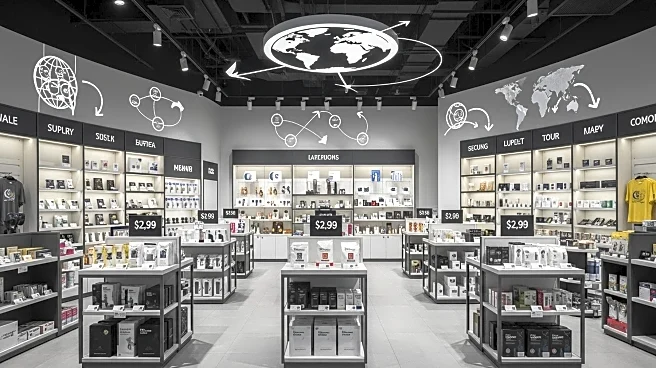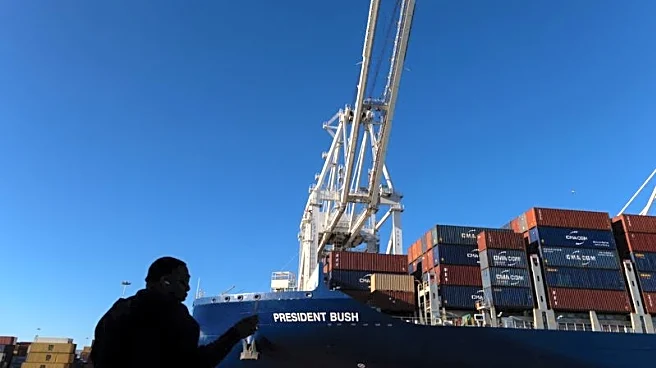What's Happening?
The U.S. retail sector is facing significant challenges due to high tariffs, which have reshaped pricing strategies and margin management. Effective tariff rates have surged to 18.3%, leading to structural inflation and increased costs for retailers. In response, retailers are diversifying supply chains and adopting dynamic pricing to mitigate tariff impacts. Companies like Best Buy are reducing reliance on China and sourcing from other countries, while Walmart and Target are restructuring their sourcing and pricing models.
Why It's Important?
The retail sector's ability to navigate trade policy pressures is crucial for maintaining competitiveness and profitability. Strategic pricing and supply chain diversification are essential for mitigating tariff impacts and ensuring long-term growth. Retailers that demonstrate agility in these areas are better positioned to outperform peers and adapt to changing market conditions. The sector's resilience is vital for sustaining economic growth and consumer spending.
What's Next?
Retailers must continue to innovate in pricing and supply chain strategies to address ongoing tariff challenges. Companies that proactively embrace these strategies will remain competitive in a fragmented global market. The focus on operational agility and dynamic pricing will be key to navigating future trade policy pressures and maintaining profitability.
Beyond the Headlines
The retail sector's response to trade policy pressures highlights broader economic implications, including the impact of tariffs on consumer spending and inflation. The shift towards supply chain diversification reflects the need for resilience in a volatile global market. The sector's ability to adapt will be crucial for sustaining economic growth and consumer confidence.












